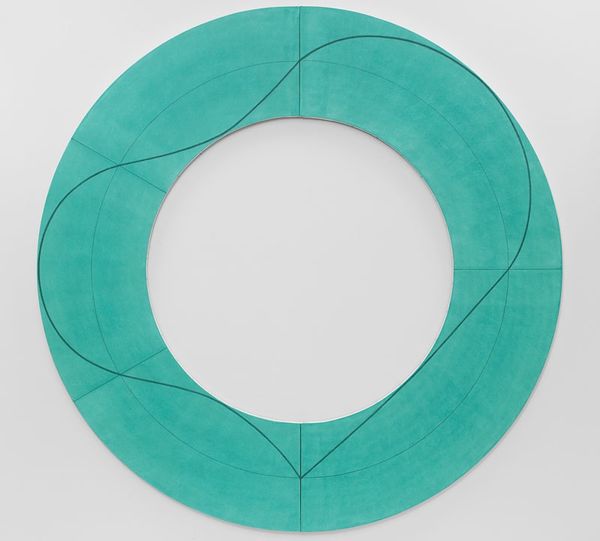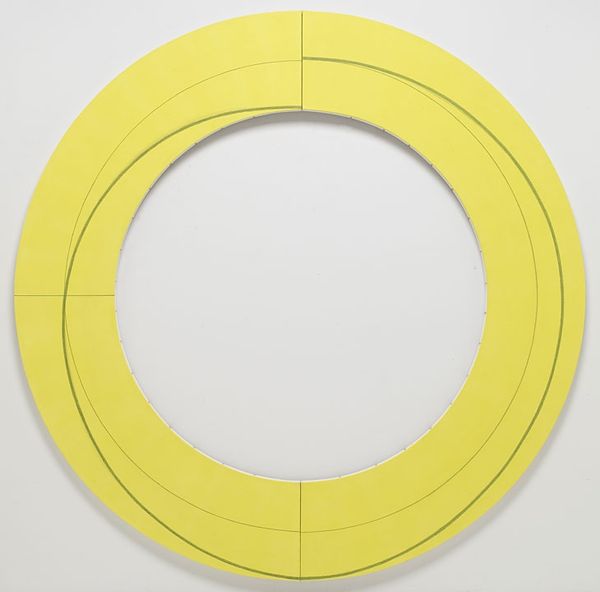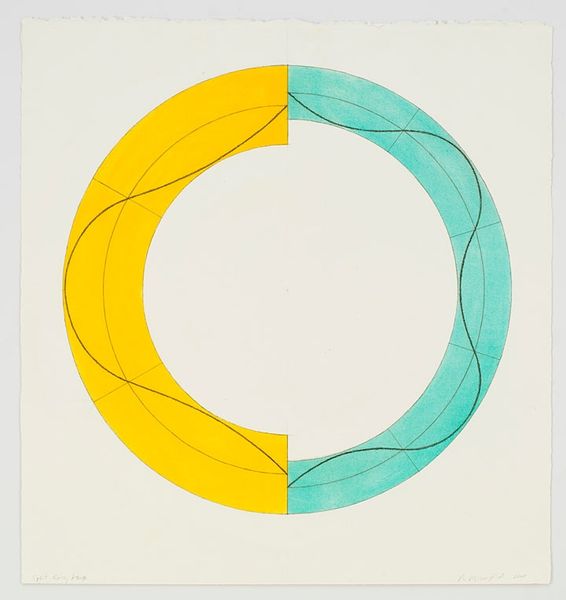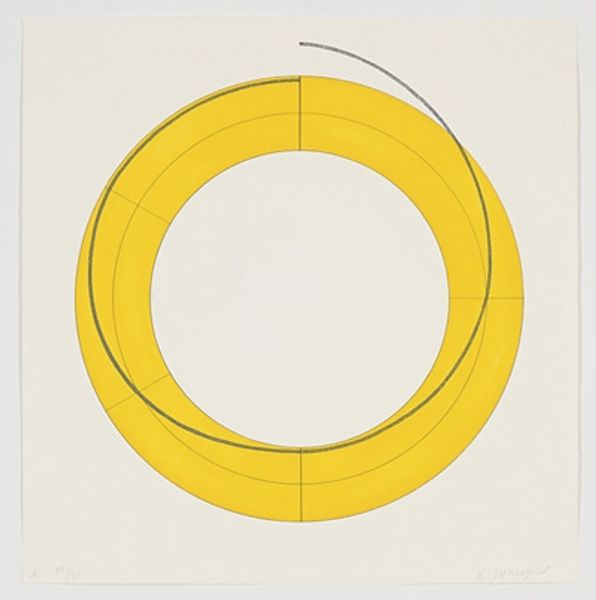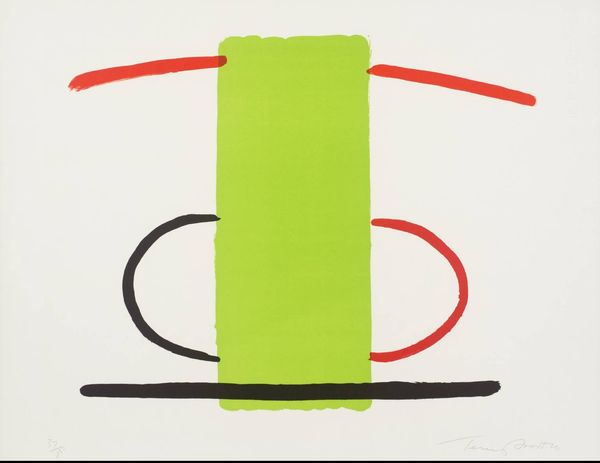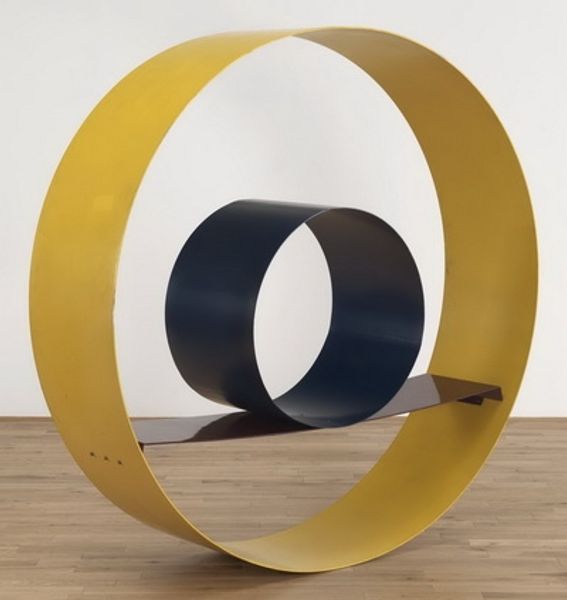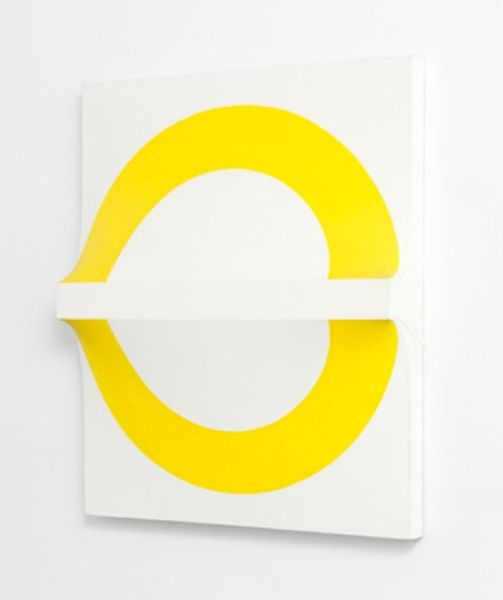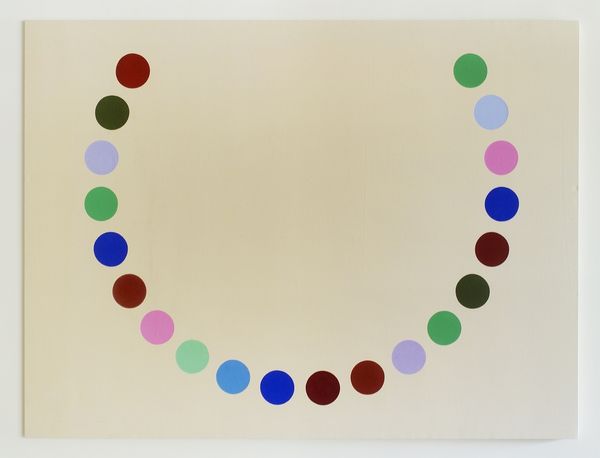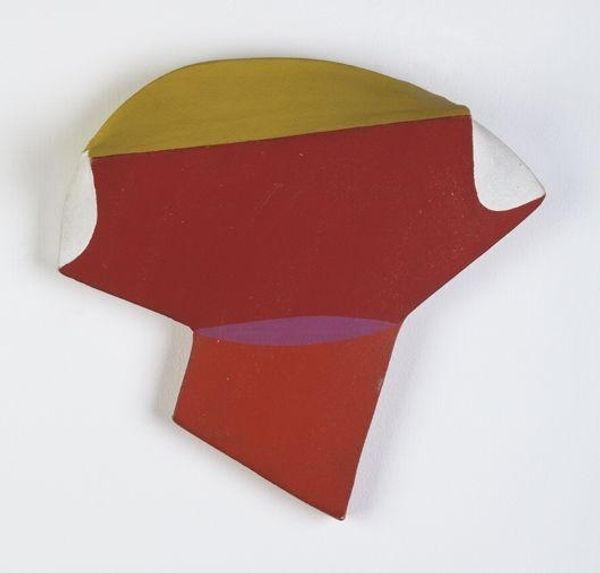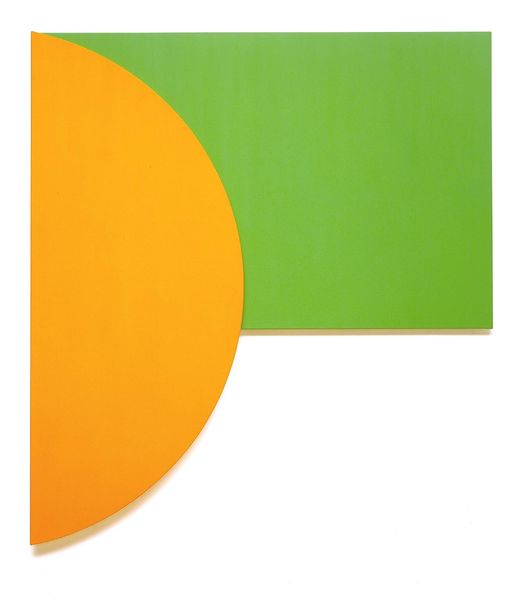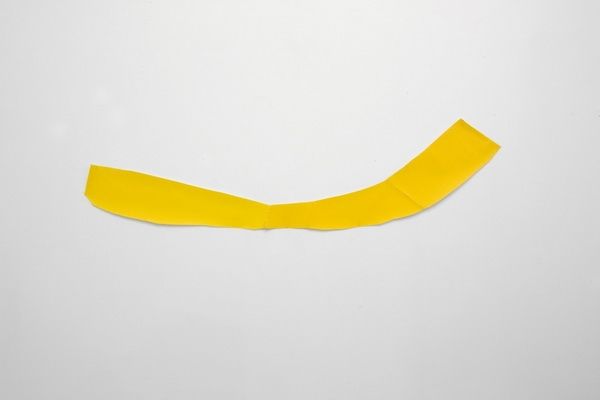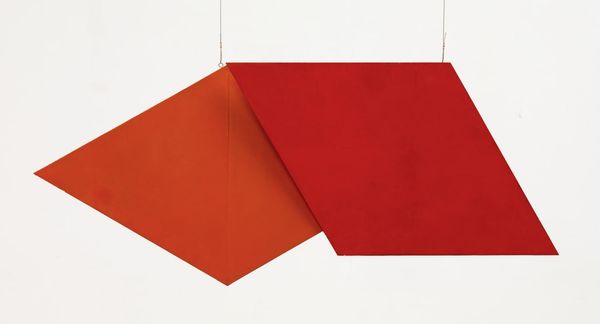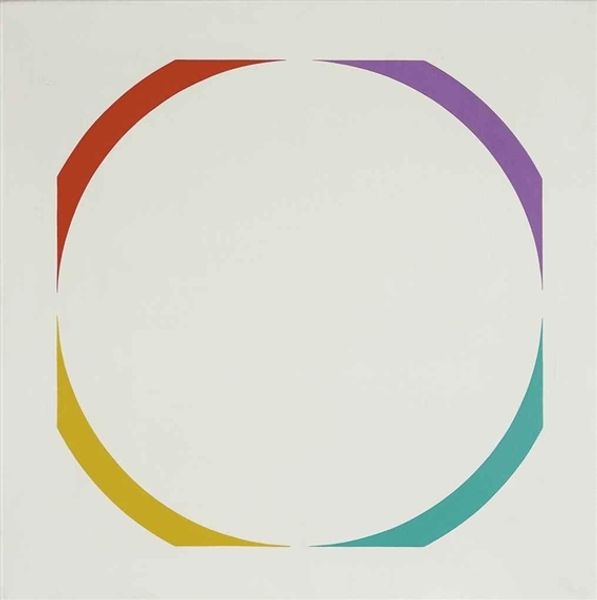
#
simple block colour background
#
red and green
#
red highlight colour
#
tropical
#
flat design on paper
#
studio lighting mockup
#
circle
#
printed format
#
book mockup
#
publication mockup
#
mockup template
#
orange
Copyright: Robert Mangold,Fair Use
Editor: So here we have Robert Mangold’s "Split Ring Image 1" from 2009. It looks to be made from painted canvas or wood. The ring, split into a vibrant yellow and a terracotta-red, gives off a feeling of incompleteness and geometric tension. What strikes you most about it? Curator: The fascinating thing about Mangold's work, from a materialist perspective, is its exploration of how simple materials—pigment and a surface, in this case—can challenge the conventions of painting. Look at the facture of the pigment. What do the slight irregularities in color and application communicate about the artist's process? It pushes against the sleek perfection often associated with geometric abstraction. Editor: That's true, you can really see the hand of the artist, even in what appears to be a very simple form. Does that also relate to the social context of its creation? Curator: Precisely. In an era increasingly dominated by mass production, Mangold seems to be reminding us of the value inherent in individual labor. He’s using minimal means – color, shape, and the traces of his hand – to raise questions about the perceived divide between high art and craft. Think of it as a quiet rebellion against the culture of polished surfaces and detachment. What do the lines suggest to you? Editor: I initially thought they were just geometric additions, but now I’m seeing them more as a key part of the physical process – almost like the drawing that precedes the final product. It feels raw, like seeing the blueprint. Curator: And that rawness is where the work finds its power. It asks us to consider the entire process of creation, not just the end result. Editor: I see. It’s not just about the shape, but about how that shape came to be. I’ll never look at geometric abstraction the same way again. Curator: Precisely! It encourages us to consider not only what we see, but *how* and *why* it came to exist.
Comments
No comments
Be the first to comment and join the conversation on the ultimate creative platform.
